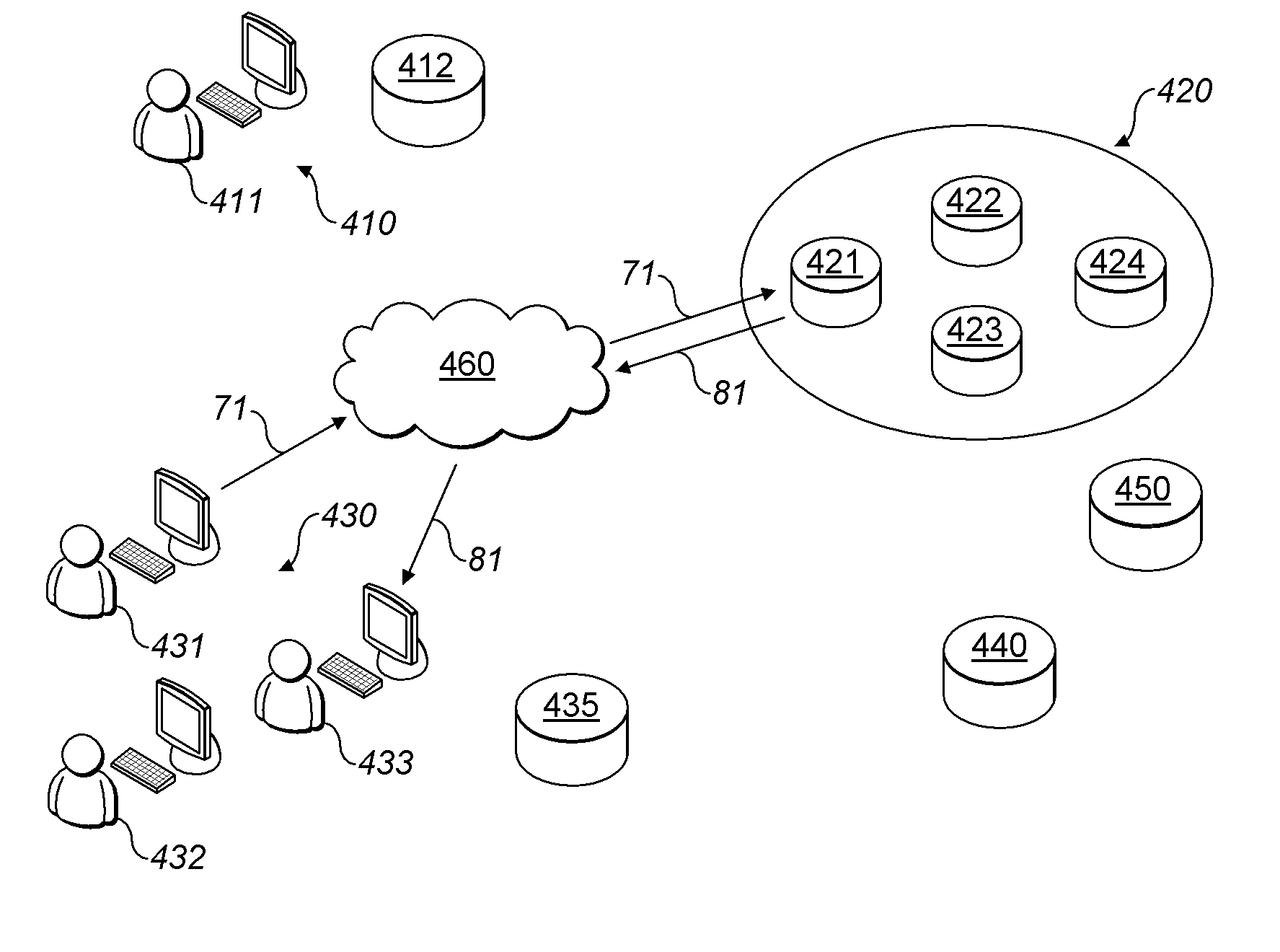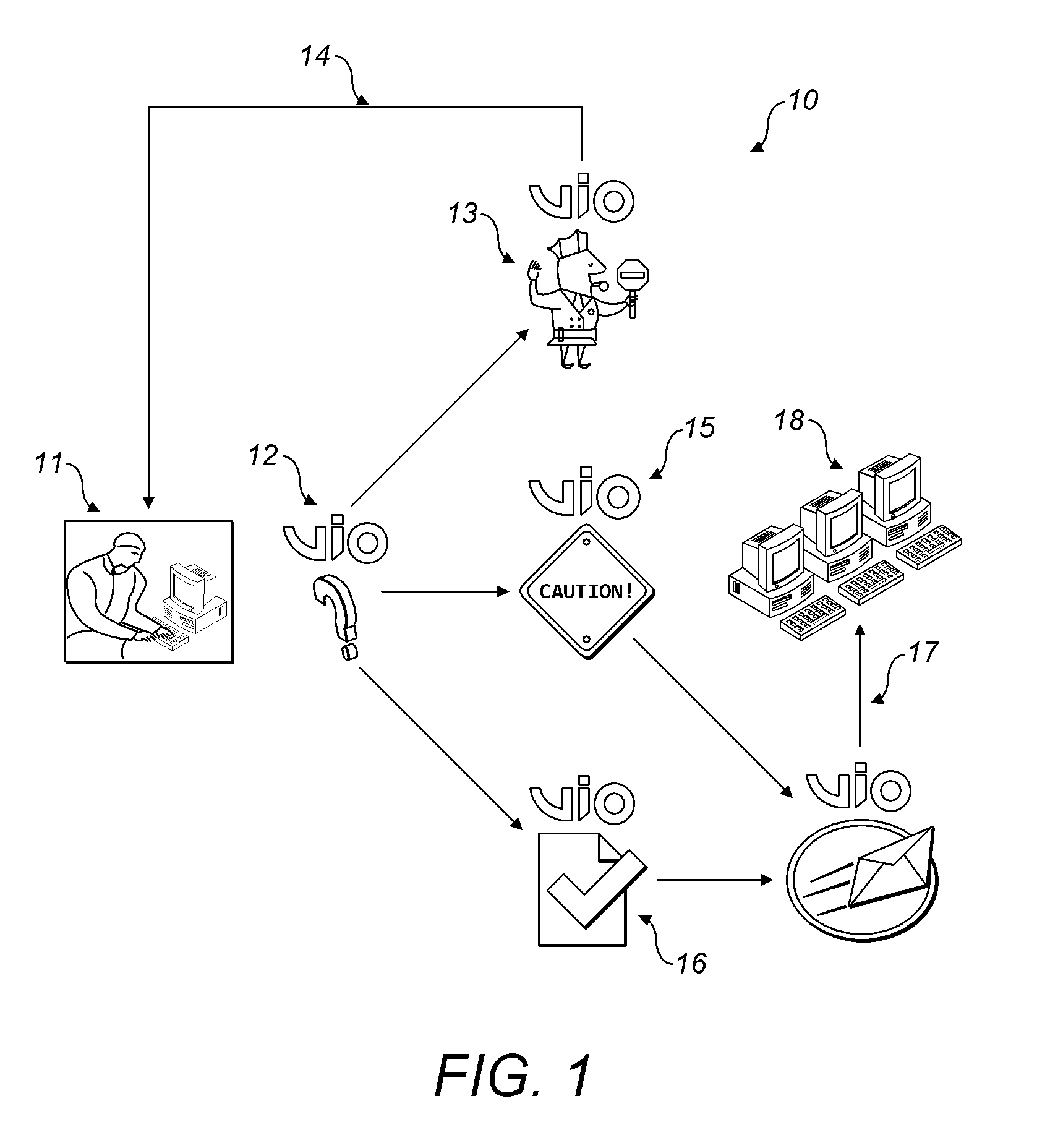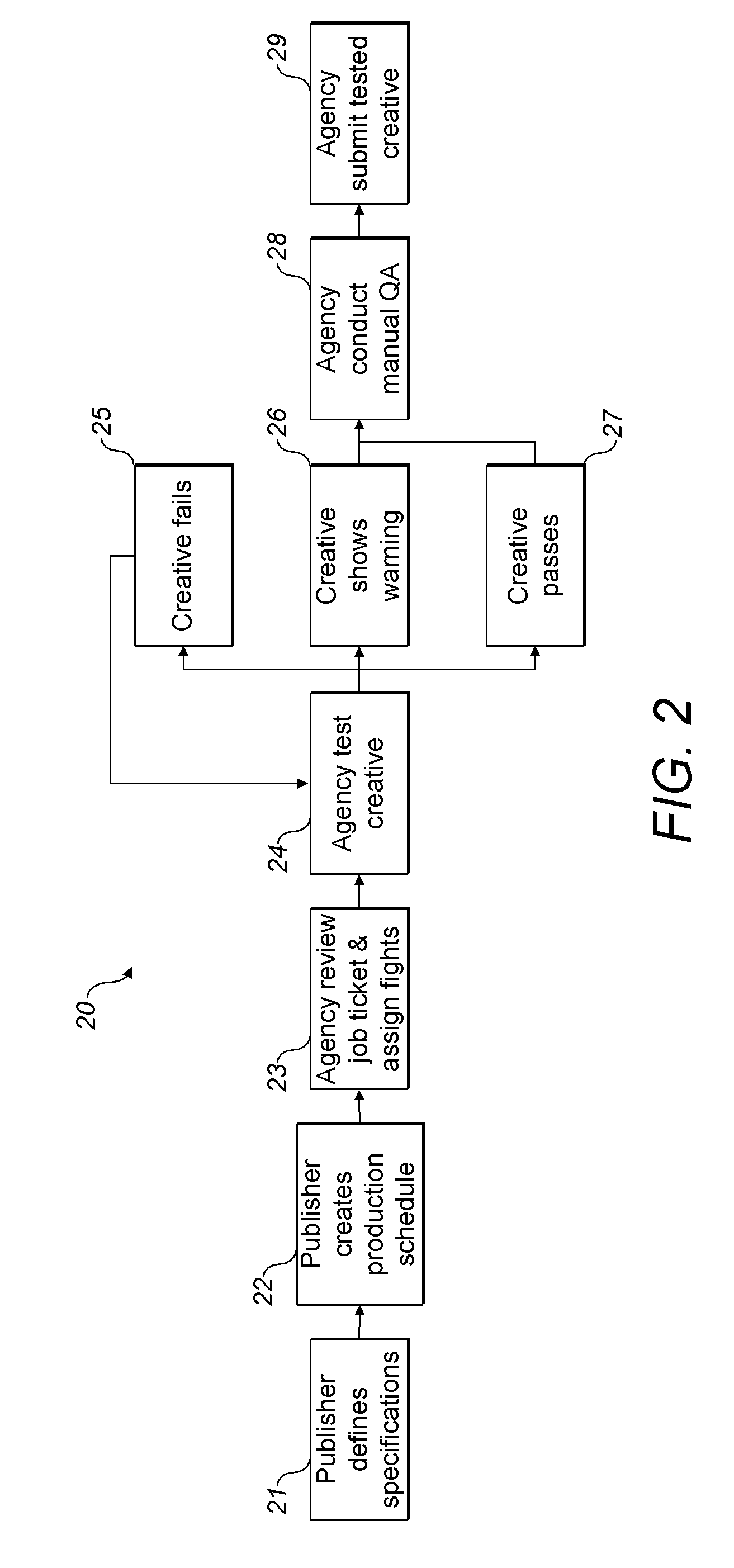Preflighting for web publishing
a technology for web publishing and preflighting, applied in the field of preflighting for web publishing, can solve the problems of serious problems such as print publishing, the inability to check the suitability of externally supplied artwork for use on websites, and the inability to achieve preflighting of documents containing content specifically intended for web publication against required specifications, so as to facilitate a booking system and enhance the commercial applicability of invention.
- Summary
- Abstract
- Description
- Claims
- Application Information
AI Technical Summary
Benefits of technology
Problems solved by technology
Method used
Image
Examples
Embodiment Construction
[0052]The present invention provides the capability to check remotely web artwork against a web publishers specifications before the artwork is submitted to the publisher, and as part of an application that not only facilitates this but also captures the results, and then makes both the artwork and the metadata available to the relevant parties according to pre-defined rules. While there are solutions on the market that assist web art workers in building material in a workmanlike and sound way, there are no solutions for enabling web publishers to export and enforce their specifications upstream to ensure that incoming web materials are not only well-built, but also built to their specifications before they are received.
[0053]The invention also allows the publisher to identify the sender of the content by its logon details, and change the criteria for acceptance not only by reference to the content and the specifications of the intended website pages for which it is destined, but al...
PUM
 Login to View More
Login to View More Abstract
Description
Claims
Application Information
 Login to View More
Login to View More - R&D
- Intellectual Property
- Life Sciences
- Materials
- Tech Scout
- Unparalleled Data Quality
- Higher Quality Content
- 60% Fewer Hallucinations
Browse by: Latest US Patents, China's latest patents, Technical Efficacy Thesaurus, Application Domain, Technology Topic, Popular Technical Reports.
© 2025 PatSnap. All rights reserved.Legal|Privacy policy|Modern Slavery Act Transparency Statement|Sitemap|About US| Contact US: help@patsnap.com



